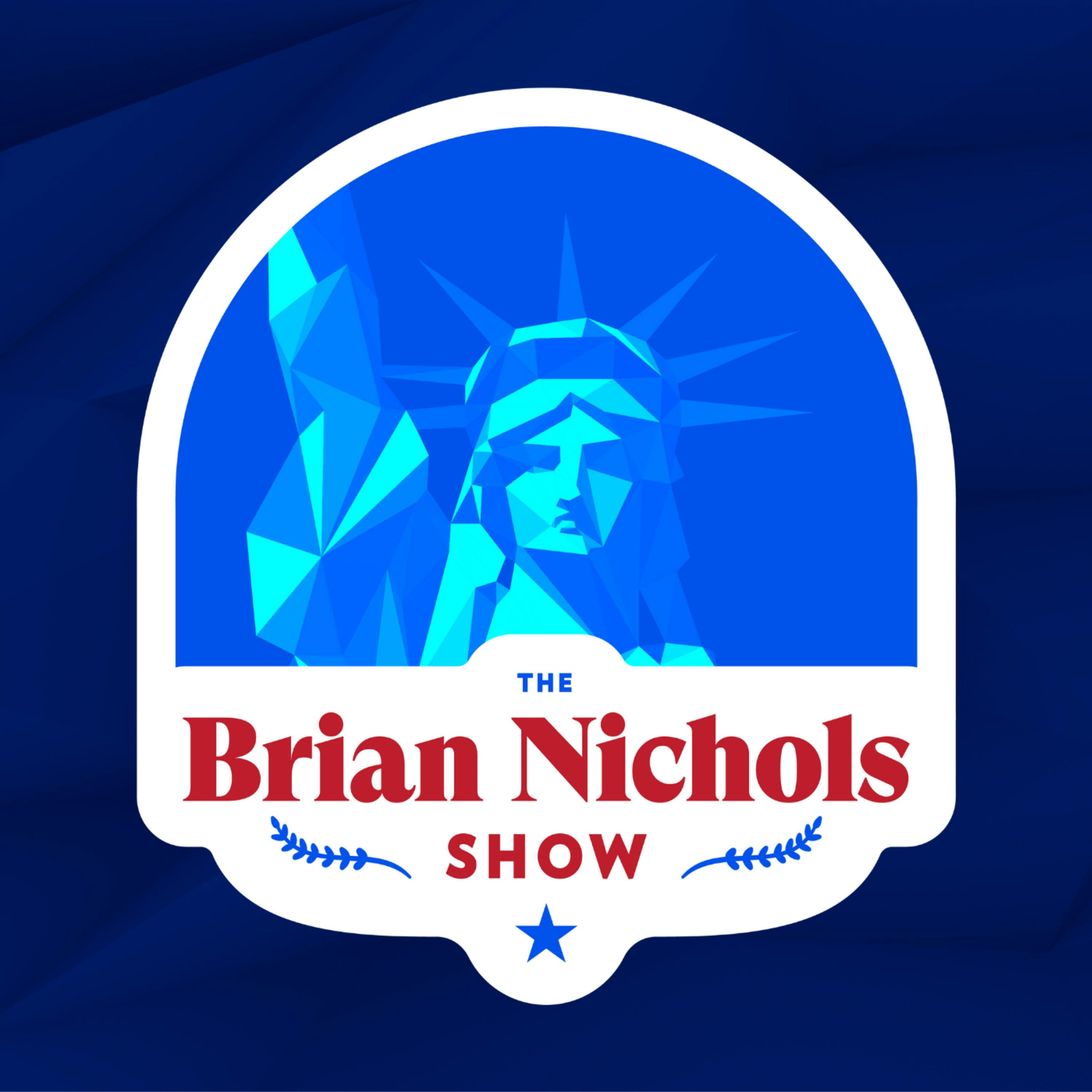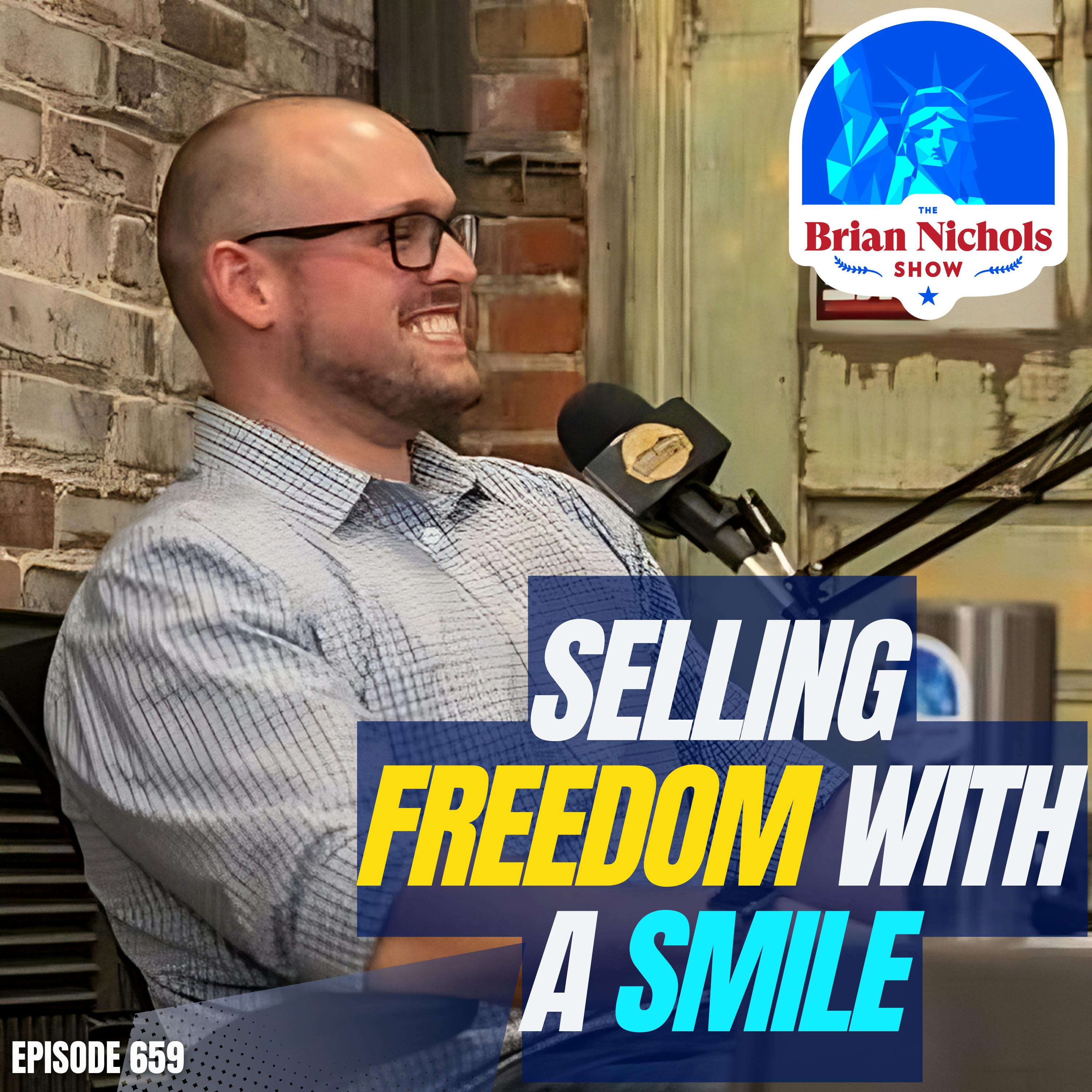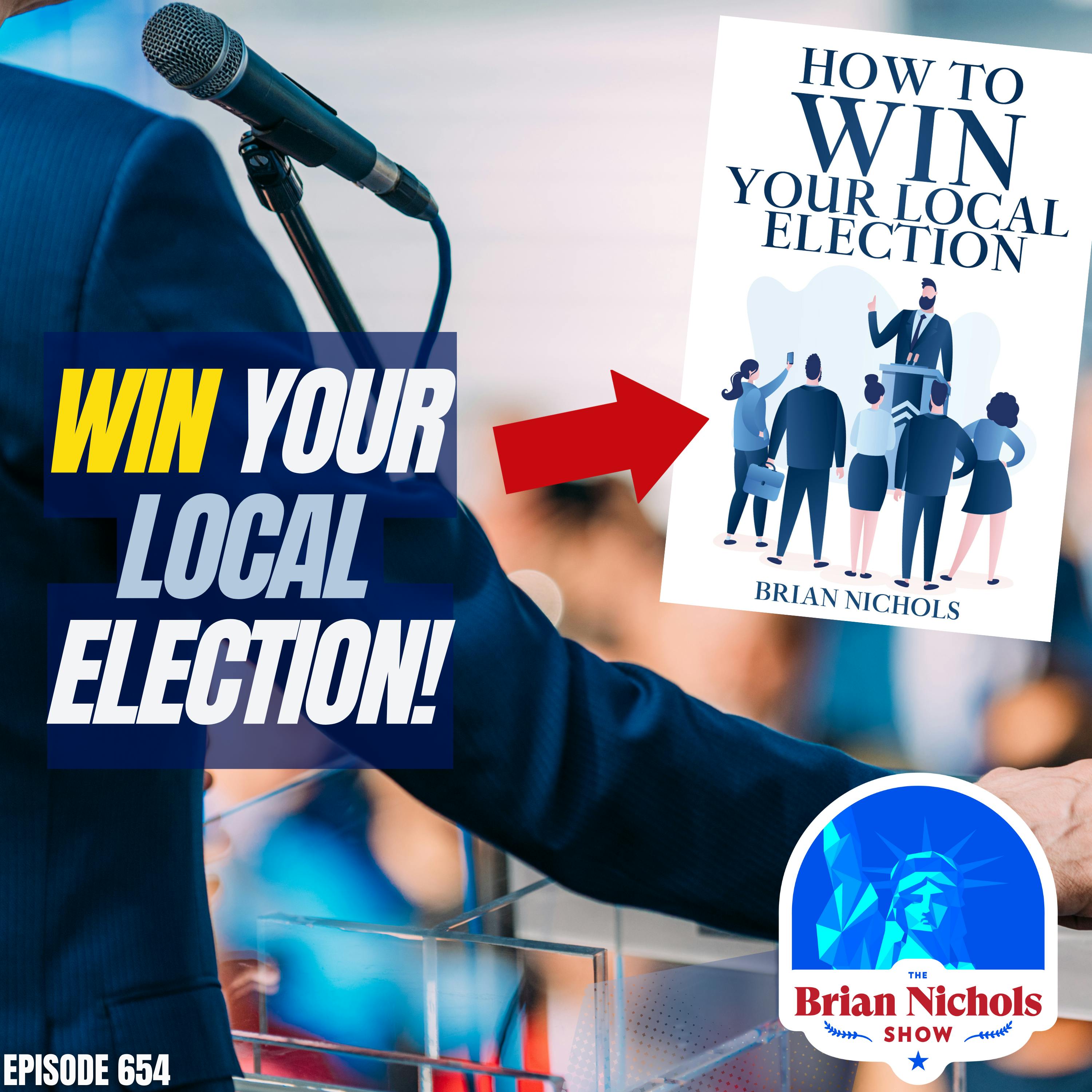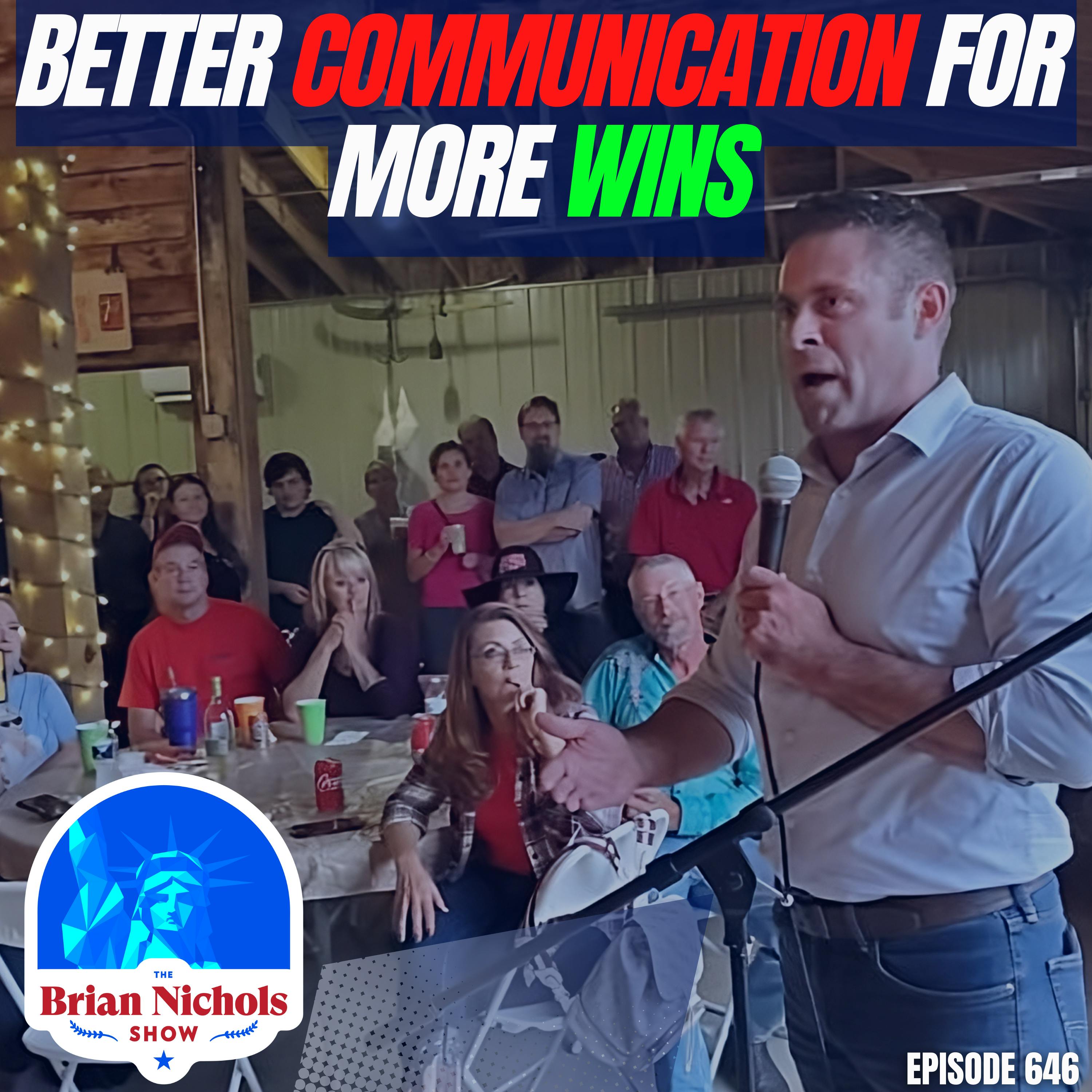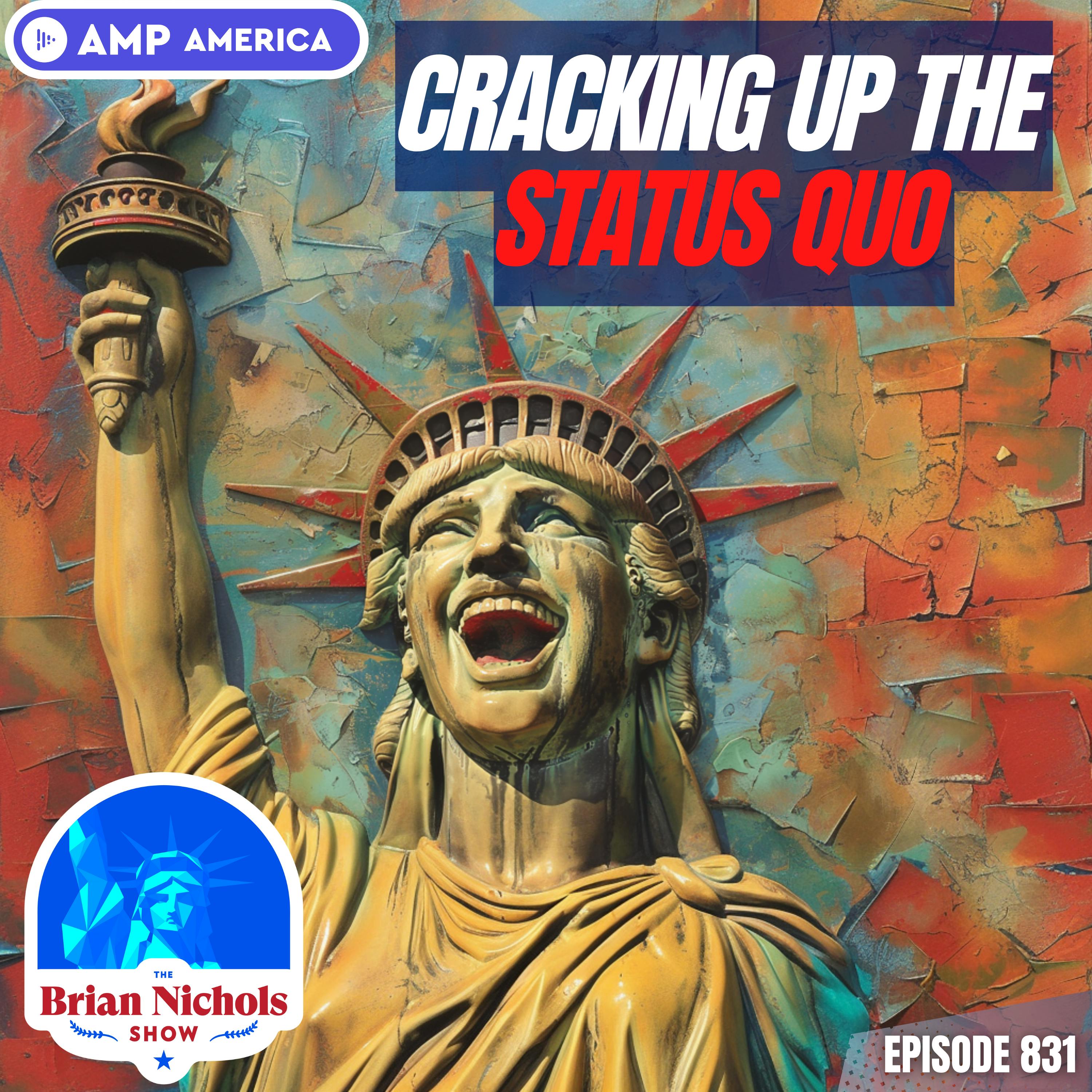887: What Makes Things Cost What They Do? | EXPLAINED
Using a banana farmer's dilemma as a relatable example, this episode unravels the complex interplay of supply, demand, and pricing in a free market economy, revealing how these forces shape every business decision and consumer purchase in our daily lives.
How does the price of a banana reveal the hidden dance of economics that shapes our everyday lives? Prepare to peel back the layers of supply and demand in today's Brian's Briefing, part of The Brian Nichols Show!
Studio Sponsor: Cardio Miracle - "Unlock the secret to a healthier heart, increased energy levels, and transform your cardiovascular fitness like never before.": https://www.briannicholsshow.com/heart
Join Brian as he takes you on a fascinating journey through the world of economics, using the humble banana as our guide. Discover how Benny the banana farmer navigates the complex web of costs, market demands, and competition to set the perfect price for his fruit. But this isn't just about bananas – it's a crash course in the fundamental principles that drive every business decision and purchase you make.
Ever wondered why prices fluctuate or how businesses stay afloat? Brian breaks down the delicate balance between profit and sales volume, revealing the invisible hand of the free market at work. You'll gain a new perspective on the products you buy and the decisions businesses make every day. Plus, learn why a libertarian approach to economics might just be the key to a more efficient and prosperous society.
But wait, there's more! Brian tackles the controversial topic of healthcare pricing, exploring how supply and demand principles apply to this complex industry. Is government intervention the answer, or could free market forces lead to better healthcare for all? Get ready to challenge your assumptions and think critically about the economic forces shaping our world.
Don't miss the Challenge of the Week and a thought-provoking listener question that will have you examining price tags in a whole new light. Whether you're an economics buff or just curious about how the world works, this episode of The Brian Nichols Show is packed with insights that will change the way you see your next trip to the grocery store – and maybe even your next vote.
❤️ Order Cardio Miracle (https://www.briannicholsshow.com/heart) with code TBNS at checkout for 15% off and take a step towards better heart health and overall well-being!
🎙️ WATCH The Brian Nichols Show, available on YouTube & Rumble. With over 885 episodes featuring local candidates, elected officials, economists, CEOs, and more, each show educates, enlightens, and informs.
🔗Follow Brian on social media: X.com/Twitter (https://www.briannicholsshow.com/twitter) & Facebook (https://www.briannicholsshow.com/facebook)
🔔 Don't forget to like, share, and subscribe to The Brian Nichols Show for more captivating interviews and insights into libertarian solutions for local problems!
Learn more about your ad choices. Visit megaphone.fm/adchoices
Studio Sponsor ➡ Cardio Miracle: Your health is an investment - NOT an expense. - 15%off using code TBNS at checkout
Support our Sponsors!
Support the program with a one-time donation or join our Patreon!
Take our audience survey for a chance to win a "Don't Hurt People, Don't Take Their Stuff" bumper sticker!
Brian Nichols 0:00
Today, we're going to dig into a topic that might seem simple on the surface, but trust me, it's got layers to it, like an onion or, I guess in this case, a banana peel. Today we're talking about supply and demand, and we're going to use the example of a banana farmer to really peel back the layers of this economic principle. So the problem is, how do businesses figure out what to charge for their stuff? And why should we care? Let's break this down using our banana farmer friend. Now you might be thinking, Brian, what's the big deal about selling Benny's Bananas here? Well, stick with me, because this little yellow fruit is going to teach us a big lesson in economics. So let's dig into this banana business. Shall we so our farmer buddy, we'll call him Benny. Benny has a whole bunch of things to think about. First off, what did it cost to grow these bananas? You've got Benny's labor costs, like paying folks to tend the crops, harvest the fruit, and then there's the fertilizer, the equipment, maybe land costs, if you're renting, All this adds up, and you need to at least cover these costs just to keep the lights on. But again, it's not just about covering costs. You've got to look at the market too. So how many people out there are craving or demanding bananas? Is it summertime? Is it smoothie season? Or maybe, is everybody on a low carb kick? The demand for your product is going to play a big role in what you can charge, and let's not forget about your competition. Are there other banana farmers in the area. What about other fruits that might steal your thunder? If oranges are dirt cheap, folks might skip bananas altogether. So now you have a decision to make, do you go high or do you go low with your pricing? If you price your bananas high, you might make a killing on each bunch you sell. But here's the catch, you might not sell as many bananas. People might look at that price tag and say, Whoa, okay, I'm just gonna have an apple instead. But on the flip side, if you price the bananas low, you might fly through your inventory. I mean, everyone loves a great deal, right? But now you're making less profit on each banana, so you might sell out, but did you actually make enough to cover those costs and turn a profit? This, my friends, is the heart of supply and demand, and this is a tricky dance that every business has to do, not just Benny and his bananas. It's about finding that sweet spot where you're making enough to stay in business, but your prices aren't so high that customers run away. Now let's zoom out for a bit. This isn't just about bananas. This is the same deal, literally, for every business out there. So whether you're selling cars, computers, giving haircuts, whatever it may be, you're always trying to find a balance between profit and sales volume. And this is where it gets really interesting. This whole process is literally happening all around us all the time. Every time you buy something, you are part of this dance. Your choice to buy or not to buy sends a signal back to the sellers about whether their price or their solution or product is right. So what's the answer to this pricing puzzle? Well, from a small l libertarian perspective, it's about letting the free market do its thing in a free market system. There is no government official saying, hey, bananas can't cost more than 50 cents a pound. Rather, it's all about the market finding its own balance in this system. As messy as that may sound, it actually helps everyone. How great question. Let's break it down for the seller, Benny, our banana farmer, he can just adjust his prices based on the cost and what's happening in the market. If there's a bad harvest or bananas are scarce, Benny can raise prices and make up for it. And if Benny's got more bananas than he knows what to do with, Benny can then lower the prices and sell more for the buyer. This system makes sure resources are used efficiently. So if bananas get too pricey, people might switch to other fruits, telling Benny and the other banana farmers to, I don't know, maybe go and grow more of those fruit. It's like a constant feedback loop that helps match what's being made to what people actually want. Now, I know that there are some folks who will say, Well, Brian, what about those greedy businesses that jack up prices just because they can? And I hear you, but here's the thing, in a truly free market, it's competition, not government, that. Keeps this in check. So if one banana farmer, let's say Bruce the banana farmer, tries to charge $10 a pound, Benny could easily undercut Bruce at $5 a pound, and people will obviously buy from Benny's Bananas versus Bruce. And the cool thing about this system is that it doesn't need to be some bureaucrat in Washington deciding what the quote, unquote, right price for bananas should be. But instead, it lets millions of sellers and buyers figure this out on their own. And here's the thing, is this system perfect. Heck no, sometimes prices will go way, way up, and then other times they're gonna crash down. But over time, it tends to find a middle ground that works both for the sellers and the buyers. And here's the kicker, too. This isn't just about efficiency. It's also about freedom. It's about letting people make their own choices, whether they're buying or selling. It's about trusting folks to make decisions for themselves, instead of having those decisions made for them by some far away authority. All right, folks, now it's time for our Challenge of the Week. Next time you're at the grocery store, I want you to pick up an item, any item, and try to think about all the stuff that went into this item's price. I want you to think about what it costs to make how many people want it, and maybe who else is selling it, and then ask yourself, Is this a fair price? Would it be better or worse if government stepped in? But don't stop there. Take it a step further. Imagine if the government suddenly said that this item couldn't be sold for more than, I don't know, half its current price. What would happen to how much of it is available and how good would it be? I mean, would stores even bother selling it? And now it's time to wrap things up with our listener question. Today, we're taking a question from our good friend Jessica. She's writing to us from Ohio, saying, Brian, how does supply and demand impact health care prices? Is that market any different? Is a great question. Jessica and the health care system is definitely a tricky one, but the basics of supply and demand still matter. The big difference here is that people need health care no matter what it costs, and this is why a lot of folks are arguing on the other side of the aisle for more government involvement in health care. But here's the thing, even in healthcare, free market ideas will lead to better results. Look at areas of healthcare where there's less government involvement and where people buy directly, like, let's say, LASIK, eye surgery or cosmetic stuff. Over time, we've seen those prices go down dramatically, while the quality increasingly goes up, people are still debating on how to balance the free market ideas with making sure everyone gets health care. But that's just not an easy problem to solve from the top down, and I think that if we bring more market forces into health care, things like clear pricing and people being able to buy directly, I could go a long way towards bringing down costs and making overall care better. All right, folks, that's all we have for today's Brian's briefing. Remember, economics isn't just for experts. It's literally something we all deal with every single day, whether we're buying some of Benny's Bananas or making some big business decision. So you need to stay informed, stay engaged, and of course, keep thinking hard about the world around you. This is Brian Nichols signing off until next time. Keep questioning, keep learning, and of course, keep pushing for a freer, more prosperous world for all of us, and hey, maybe enjoy a banana while you're at it. Take care. You.
Transcribed by https://otter.ai























